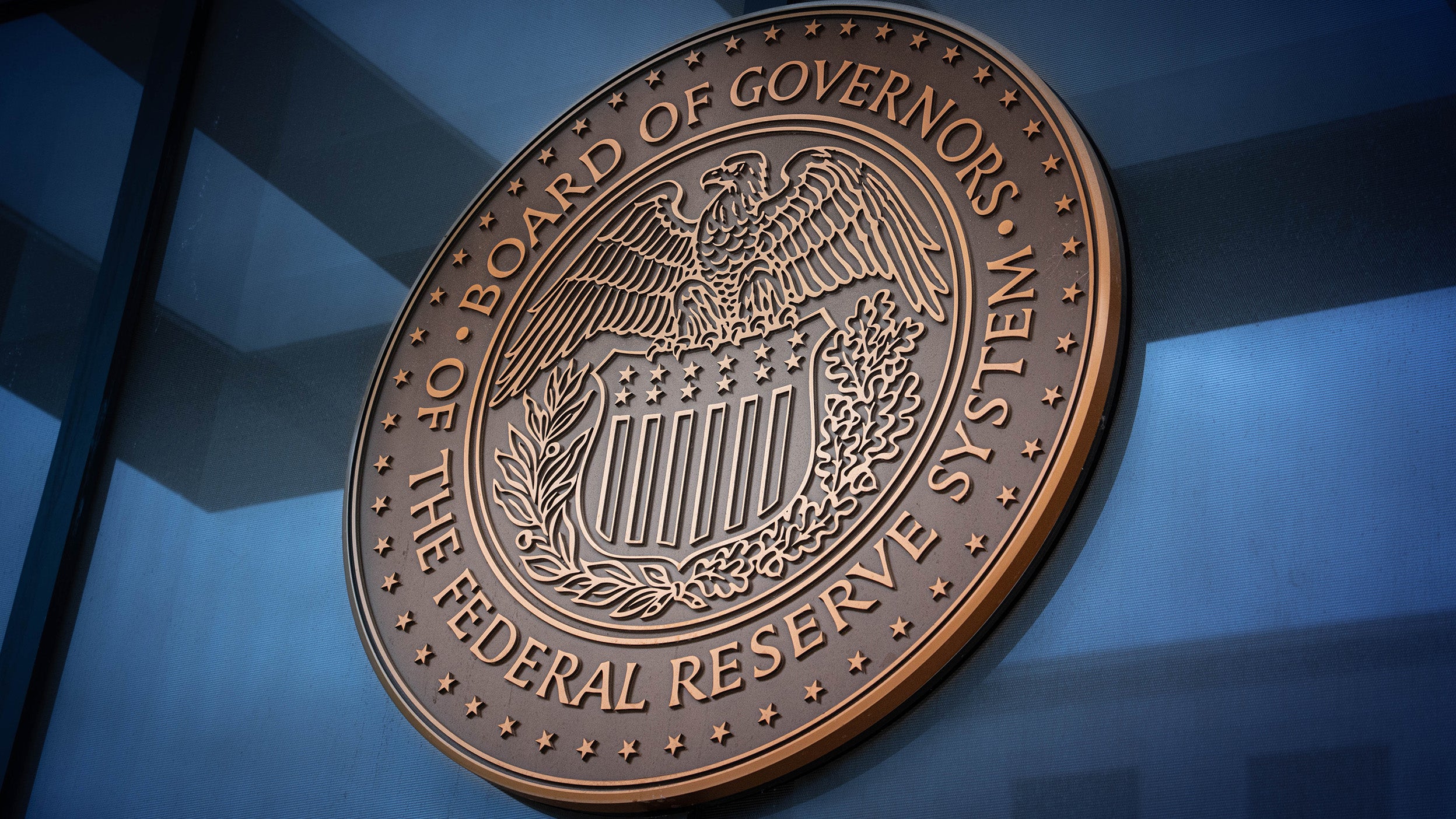
Markets and Economy Above the Noise: Rethinking 2025 narratives
In 2025, clear storylines on the Federal Reserve, AI stocks, and rates captivated us. But the numbers don’t always match the narratives.

Markets may only need incremental progress, not full clarity on trade-tariff policy, to keep rising.
Rumors of the demise in demand for US Treasuries appear greatly exaggerated. There’s been little evidence to support it.
Moody’s downgrade, like past downgrades, shouldn’t pose a structural threat to the US Treasury market.
“If every instinct you have is wrong, then the opposite would have to be right.”
Jerry Seinfeld’s advice to George Costanza has felt relevant to investors lately. But unlike Costanza’s decision to order chicken salad on untoasted rye, the smarter move for investors may have been to do nothing at all. Just as $74 billion flowed out of equity mutual funds and ETFs,1 the market bounced back into positive territory for the year.2 Cursed again by our action biases!
To be fair, the fundamentals haven’t shifted much. Tariffs remain elevated,3 and business sentiment is still historically weak.4 Yet markets have rallied,5 likely because we’ve moved past peak policy uncertainty.6 There are signs that certain market pain points are forcing the administration to soften its more extreme trade stance.
Looking ahead, do markets need full clarity on trade to keep rising, or just incremental progress? Recent history favors the latter. In December 2018, President Trump agreed to a 90-day trade truce with China. The phase one deal wasn’t signed until January 2020, but the market performed quite well in the interim.7
Serenity now!
…rumors of the demise of demand for US Treasuries have been greatly exaggerated in my opinion. Markets absorbed May’s Treasury auction, with little evidence to support fears of foreign Treasury boycotts. In fact, the average 10-year US Treasury note bid-to-cover ratio over the past three months is slightly above the long-term average.8 I’d expect US Treasuries to continue to trade based on expectations of monetary policy and nominal growth, and not on concerns of fiscal sustainability.
A: It’s unlikely. But let’s quantify it:
“This one-notch downgrade on our 21-notch rating scale reflects the increase over more than a decade in government debt and interest payment ratios to levels that are significantly higher than similarly rated sovereigns.”
— Moody’s Investors Service
Moody’s Investors Service downgraded US government debt on May 16, echoing similar past actions. Standard & Poor’s did so 14 years ago, and Fitch two years ago.11 In short, this isn’t new.
The current downgrades, like those before them, don’t pose a structural threat to the US Treasury market. US Treasuries are their own asset class and thus are insulated from forced selling. It’s also important to remember that the US is an exceptionally wealthy nation. While government debt stands at approximately $37 trillion,12 total US household net worth is nearly $160 trillion.13
There are also viable policy options available to help curb the growth of national debt. Ultimately, it’s a question of political will.
“Now, if the chairman of the Fed ... if he would lower interest rates like China did, like I think the UK did, but like numerous other countries have done, it would be, it’s like jet fuel ... but he doesn’t want to do it… Probably he’s not, he’s not in love with me.”
— President Donald Trump
It’s unlikely that Federal Reserve (Fed) Chairman Jerome Powell’s personal views toward the president have any bearing on Fed policy. It currently finds itself in a difficult position: Tariffs are expected to slow economic growth while simultaneously pushing prices higher, at least in the short term.
Meanwhile, as the US faces potential shortages and rising prices, China and countries in Europe may be dealing with the opposite problem: an oversupply of goods originally intended for export. For the US, the challenge is near-term inflation; for much of the rest of the world, it could be near-term deflation. That contrast helps explain why central banks globally are shifting toward more accommodative policies.
My suggestion: Don’t fight the European Central Bank or the People’s Bank of China.
The answers to three questions help guide our investment views in our Portfolio Playbook.
A recession doesn’t appear imminent. If it were, credit spreads would likely be significantly wider.14
Global growth is expected to remain below trend and continue to deteriorate.15
Policy easing is ongoing, with more aggressive measures being implemented outside the US.
Given this backdrop, a prudent investment approach could be to focus on improving portfolio quality and reducing valuation. Diversifying beyond mega-cap US growth stocks into value, mid-cap, and international stocks may help reduce overall portfolio valuations.16 A lower-valuation portfolio may offer downside protection and may be well-positioned to benefit from a potential global economic recovery.
For each episode of our Greater Possibilities podcast, we phone a friend to learn more about a topic. In the latest episode, we phoned Justin Leverenz of the Invesco Developing Market team. Here’s what he said:
My travels took me to a conference in Atlanta where the keynote speaker was Dominique Wilkins. It’s not every day that I get to hear from an NBA legend and Hall of Famer. He focused on the value of healthy competition. He admitted that he hated the competition when he played, but he still looked up to the league’s best players. Competition can make you better. It also makes the game more fun.

In 2025, clear storylines on the Federal Reserve, AI stocks, and rates captivated us. But the numbers don’t always match the narratives.

For investors looking to diversify their mega-cap technology exposure, improving growth and falling interest rates may be good reasons.

A rate cut, which markets are pricing in despite Fed member differences, and an expected improving economy in 2026, could support stocks.


Get the latest information and insights from our portfolio managers, market strategists, and investment experts.
Important information
NA4519401
Image: shaunl / Getty
All investing involves risk, including the risk of loss.
Past performance does not guarantee future results.
Investments cannot be made directly in an index.
This does not constitute a recommendation of any investment strategy or product for a particular investor. Investors should consult a financial professional before making any investment decisions.
Fixed income investments are subject to credit risk of the issuer and the effects of changing interest rates. Interest rate risk refers to the risk that bond prices generally fall as interest rates rise and vice versa. An issuer may be unable to meet interest and/or principal payments, thereby causing its instruments to decrease in value and lowering the issuer’s credit rating.
Investments in companies located or operating in Greater China are subject to the following risks: nationalization, expropriation, or confiscation of property, difficulty in obtaining and/or enforcing judgments, alteration or discontinuation of economic reforms, military conflicts, and China’s dependency on the economies of other Asian countries, many of which are developing countries.
Credit spread is the difference in yield between bonds of similar maturity but with different credit quality.
Diversification does not guarantee a profit or eliminate the risk of loss.
Inflation is the rate at which the general price level for goods and services is increasing.
Monetary easing refers to the lowering of interest rates and deposit ratios by central banks.
The MSCI Europe Index captures large- and mid-cap representation across a universe of developed market countries in Europe.
An overnight index swap (OIS) is an interest rate swap involving the overnight rate being exchanged for a fixed interest rate. An overnight index swap uses an overnight rate index, such as the overnight federal funds rate, as the underlying rate for its floating leg, while the fixed leg would be set at an assumed rate.
The University of Michigan Consumer Sentiment Index is published monthly, based on a telephone survey designed to assess US consumer expectations for the economy and their personal spending.
The price-to-earnings (P/E) ratio measures a stock’s valuation by dividing its share price by its earnings per share.
The risks of investing in securities of foreign issuers, including emerging market issuers, can include fluctuations in foreign currencies, political and economic instability, and foreign taxation issues.
The Russell 1000® Value Index, a trademark/service mark of the Frank Russell Co.®, is an unmanaged index considered representative of large-cap value stocks.
The Russell Midcap® Index, a trademark/service mark of the Frank Russell Co.®, is an unmanaged index considered representative of mid-cap stocks.
The S&P 500® Index is an unmanaged index considered representative of the US stock market.
Stocks of medium-sized companies tend to be more vulnerable to adverse developments, may be more volatile, and may be illiquid or restricted as to resale.
In general, stock values fluctuate, sometimes widely, in response to activities specific to the company as well as general market, economic and political conditions.
A value style of investing is subject to the risk that the valuations never improve or that the returns will trail other styles of investing or the overall stock market.
The opinions referenced above are those of the author as of May 20, 2025. These comments should not be construed as recommendations, but as an illustration of broader themes. Forward-looking statements are not guarantees of future results. They involve risks, uncertainties, and assumptions; there can be no assurance that actual results will not differ materially from expectations.
This link takes you to a site not affiliated with Invesco. The site is for informational purposes only. Invesco does not guarantee nor take any responsibility for any of the content.